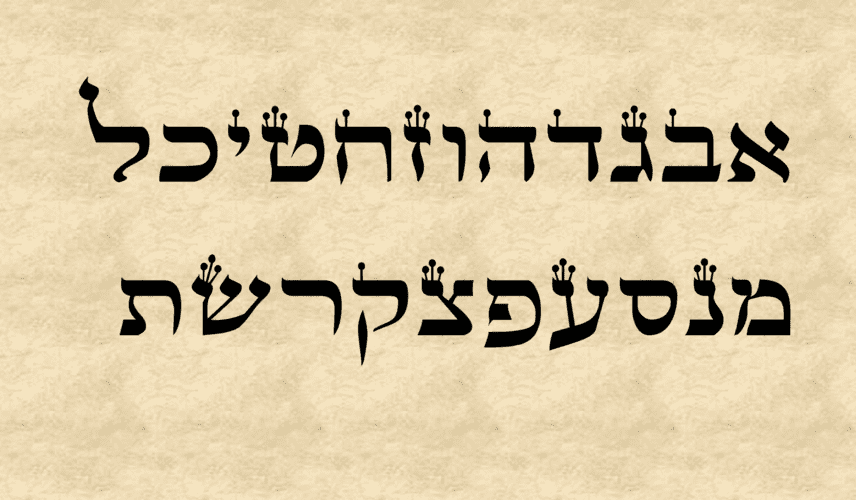The Hebrew language is written with an alphabet quite different from the one we use in English. The “alef-beit”, as the Hebrew alphabet is known, consists of the 22 letters that are used to write the Hebrew words.
The English language, as well as other Western languages, such as Portuguese, Spanish, French, Italian, etc., is written with the Latin alphabet, which was used by the Romans to write their language, Latin. The Latin alphabet was eventually adopted by all these modern languages, including English.
But before the Latin alphabet existed, there were already several other forms of writing systems, used in many languages around the world.
To better understand the origin of the Hebrew alphabet, let’s understand a little about the origin of writing, and the history of the alphabets.
A little about the history of writing
When writing was invented, people initially created symbols to represent ideas or words.
For example, ancient Egyptian script, or even Chinese script and parts of the Japanese script, which are still used today, were invented to work as follows:
Each symbol represents a word, or an idea. This means that for each word, you would need to learn a different symbol or combination.
To write “tree”, for example, you would learn a symbol that would represent a tree. To write dog, you would have a symbol for the dog. Love, happiness, justice, heaven, earth, man, woman… each word would possess a symbol.
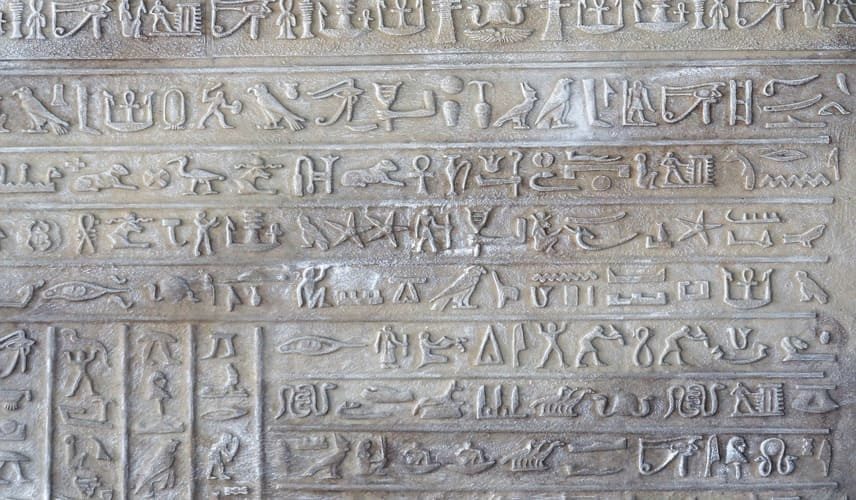
These are extremely complex types of writing, which require learning thousands of different symbols.
Over time, some people decided to invent a simpler script: the phonetic writing.
This means that each symbol would represent a sound, rather than a word. Thus, with a few symbols it would be possible to write all the words. Each letter is a sound; it would be enough to join the sounds to form the words.
The idea was as follows: a “drawing” that previously represented a word, would now represent the sound which the word started with. Some symbols were selected, so that a one word symbol would now represent a phoneme, and each existing sound of the language received a symbol.
Let’s see an example: Imagine that you were going to invent the alphabet today, based on the English language. Imagine that in the English language we use “pictograms”, that is, we make drawings to represent each word. So you decide to invent a phonetic alphabet to simplify writing.
You want to invent a letter for the “M” sound. You choose any word that starts with this sound.
For example, you could choose the word “monkey”. Then you would take the drawing of the monkey, and create the letter “monkey”, which would be used to represent the sound “m”. So in every word that this sound appeared, the monkey’s design would appear. From now on, the monkey’s drawing would no longer represent the monkey, but only the “M” sound.
You would choose a word for each phoneme. Since there are fewer speech sounds than words, only about twenty, from now on, instead of using thousands of symbols, you would only use a limited number around twenty, which would be enough to write anything.
Can you read this “word”?

It is like a child’s game, but this was more or less the idea used to create phonetic writing.
The first phonetic alphabets were invented by the Semitic peoples. They would have adapted the complicated Egyptian “drawings”, transforming them into simple phonetic writing. This Semitic phonetic writing is called “Proto-Sinaitic” script, because it was discovered in the Sinai region.
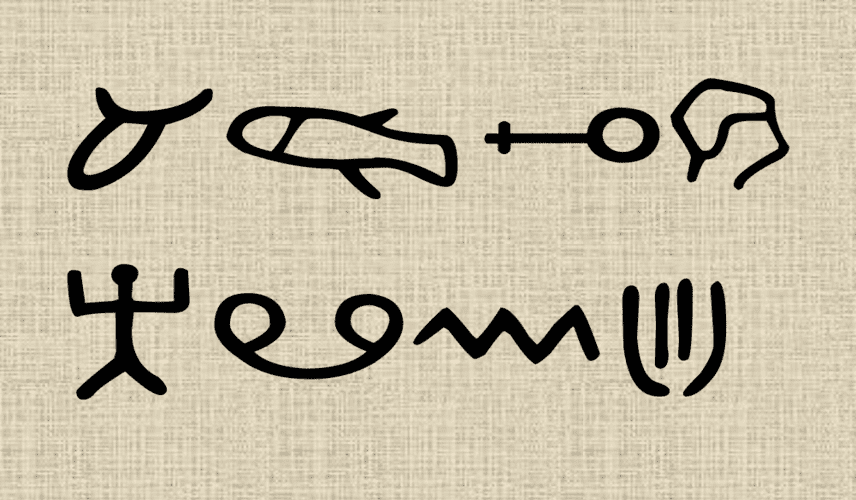
From this original Semitic alphabet, which looked more like Egyptian drawings, several alphabets came out.
As time went by, these letters were modified.
Let’s go back to our example of the alphabet you invented for English, and imagine again the “monkey” you drew.
Over the generations, people found your “monkey” somewhat picturesque, complicated, perhaps even too childish or naive. Nobody wanted to draw a monkey over and over in the middle of a text, or to read texts full of animal drawings. Then people started to modify the monkey design you had invented, until it became a totally different symbol, which would represent the “m” sound, but which would have nothing more to do with the original monkey design.
(The monkey is just an example; it has nothing to do with the origin of the letter “m” in any language).
From Proto-Sinaitic “drawings” to the present
From that “Proto-Sinaitic” alphabet, still with drawings similar to Egyptian script, several alphabets emerged, such as the famous Phoenician alphabet, the Aramaic alphabet and the Hebrew alphabet.
The Hebrew alphabet was formerly still written differently than what we know today. This older form of the Hebrew alphabet is called the “Paleo-Hebrew” alphabet, which is more like the Phoenician alphabet.
After the time of the Babylonian exile, the Jews began to write the letters most similar to the Aramaic alphabet, which are more similar to the current Hebrew alphabet.
The Dead Sea scrolls, which are the oldest known Hebrew Bible manuscripts, from the 2nd century BC, are written in letters much more similar to the ones we use today.
All of these Hebrew alphabets are actually composed of the same letters, with the same names and the same sounds, but “drawn” differently.
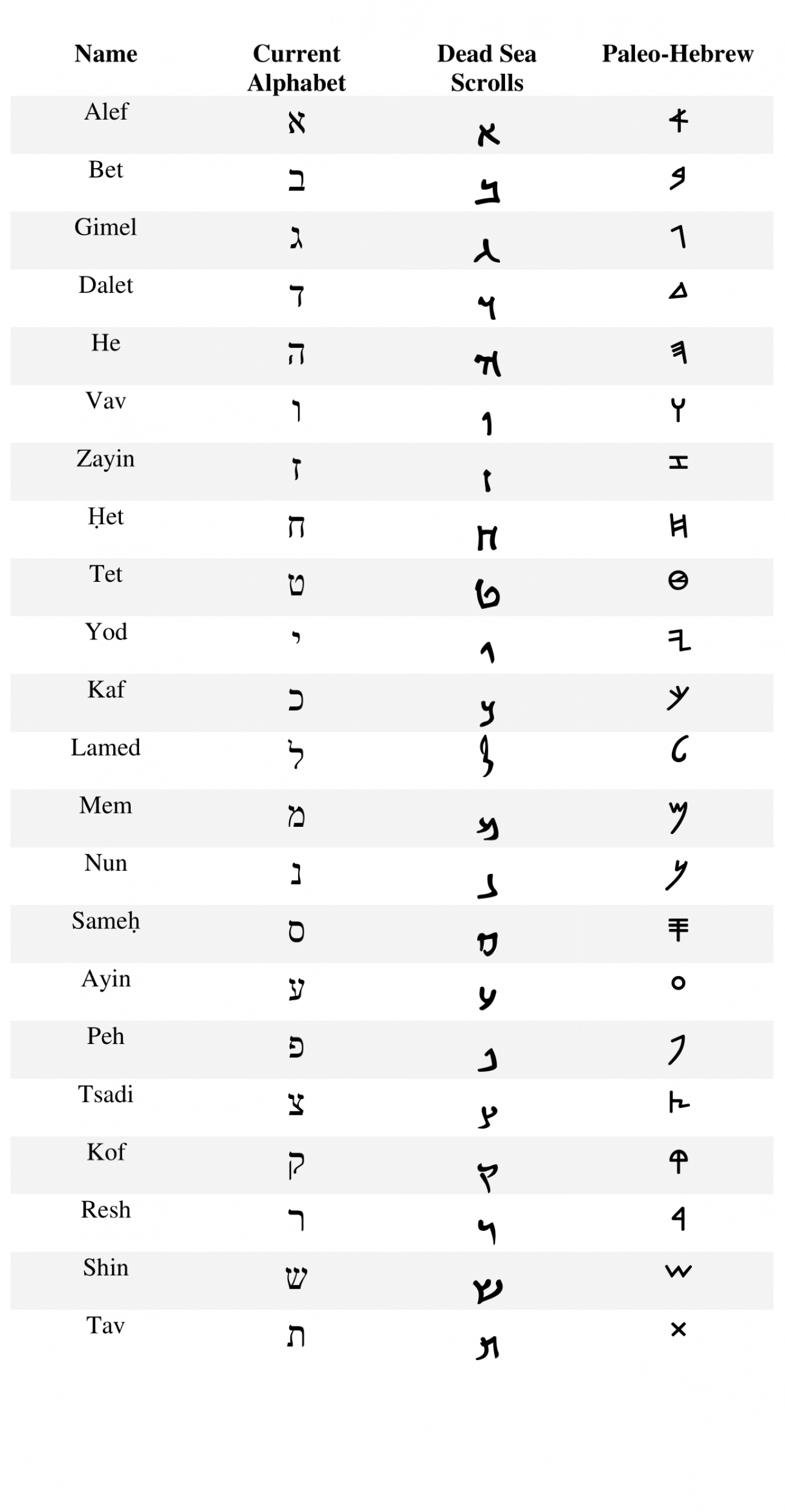
The way Hebrew is written today is called the “Square script”.
Anyway, this is the Hebrew alphabet as we know it today:
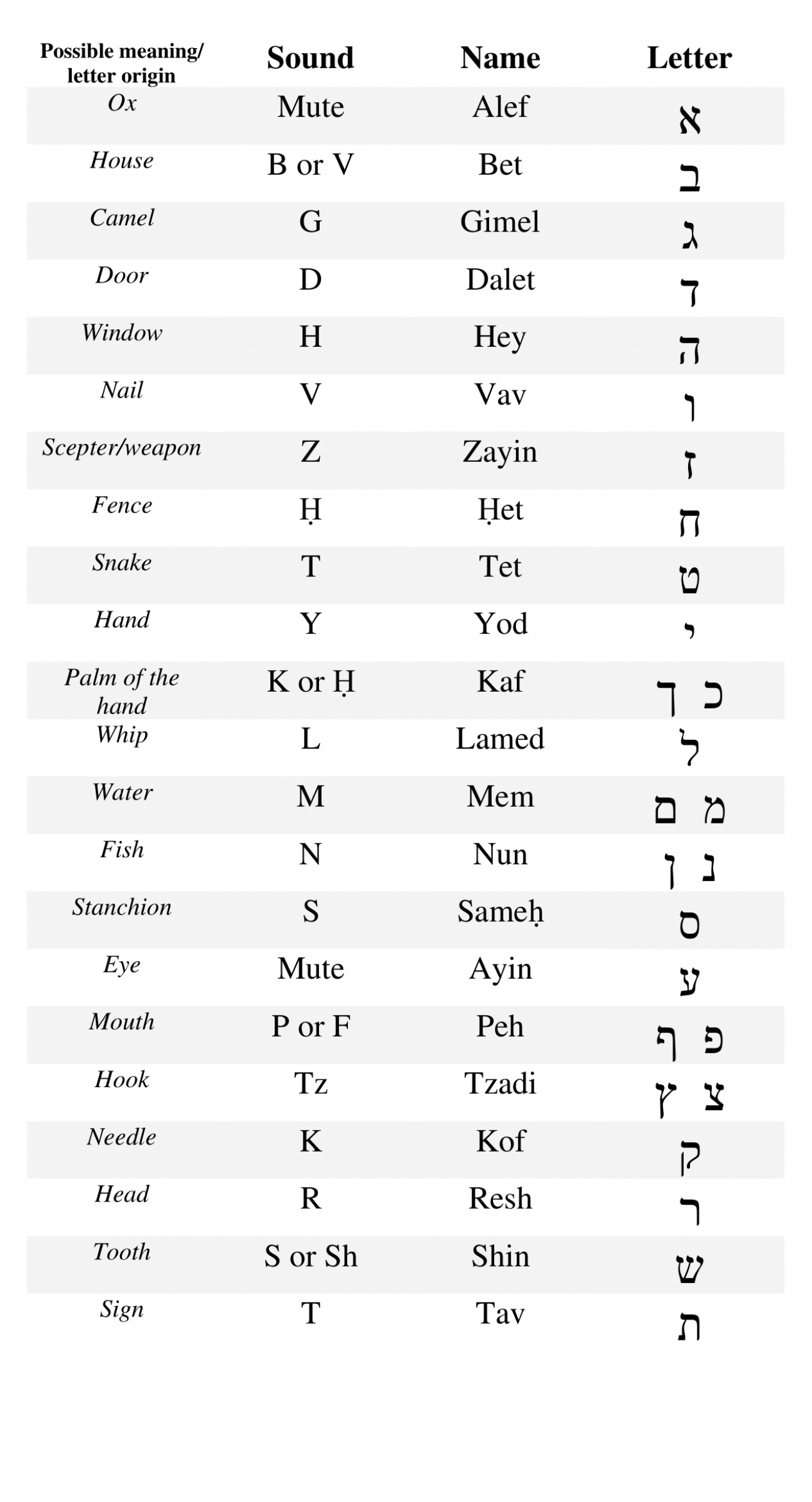
A “little” detail
But… going back to the phonetic alphabet invented by the Semites, it had some limitations: it only represented consonants (with few exceptions in some cases). The vowels you would have to deduce by the word. So is the Modern Hebrew alphabet.
Imagine that the English language was written like this:
“IN TH BGINNNG GD CRTD TH HVNS AND TH ERTH. NW TH ERTH WS FRMLSS AND EMPTY, DRKNSS WS OVR TH SURFC OF TH DP AND TH SPRT OF GD WS HVRNG OVR TH WTRS”.
The idea is more or less like this.
Can you read the text above?
Probably yes, because you know the English language well, and possibly also know this text. You can “guess” the vowels, because you know the words.
But someone who doesn’t know English would never have a clue how to pronounce these words.
This is how they created the Hebrew alphabet, and the other Semitic alphabets.
After all, their idea was that someone who is going to read a language necessarily knows how to speak that language.
Only later did other Peoples invent other alphabets with vowels, like the Greek alphabet and the Latin alphabet, which you know well.
But as for Hebrew, you would have to know the language to be able to read.
The solution
It turns out that there was a time when Hebrew was no longer spoken in everyday life. Most Jews no longer knew how to speak Hebrew, but used it in liturgy, prayers, and reading Torah.
Then the problem arises: How could someone who cannot speak Hebrew fluently read words whose vowels should be “guessed”?
How could you, today, who cannot speak Hebrew and intend to learn, learn to read?
For this reason, there came a time when the Jews created special signs, in addition to letters, to represent vowels. Someone had the idea of adding the vowels in the Hebrew texts, so that the pronunciation was not lost, and anyone could read.
In the next article, we will talk about exactly this, about the Hebrew vowels.
Another important detail: Hebrew is written from right to left, exactly the opposite of English and other Western languages.

The difference between Biblical Hebrew and Modern Hebrew
A question I often get asked is the difference between Biblical Hebrew and Modern Hebrew. First, we must know that whether biblical or modern, we
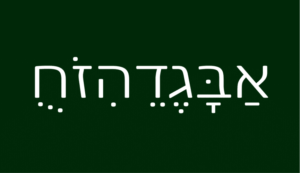
The Hebrew vowels
Hebrew vowels are represented by signs that are not part of the alphabet. In fact, vowels are not originally written in Hebrew language (they are
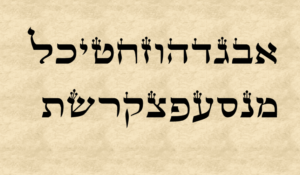
The Hebrew Alphabet
The Hebrew language is written with an alphabet quite different from the one we use in English. The “alef-beit”, as the Hebrew alphabet is known,

The difference between Hebrew and Aramaic
In this article we are going to talk about another frequently asked question: What is the difference between Hebrew and Aramaic languages? As a simple starting

